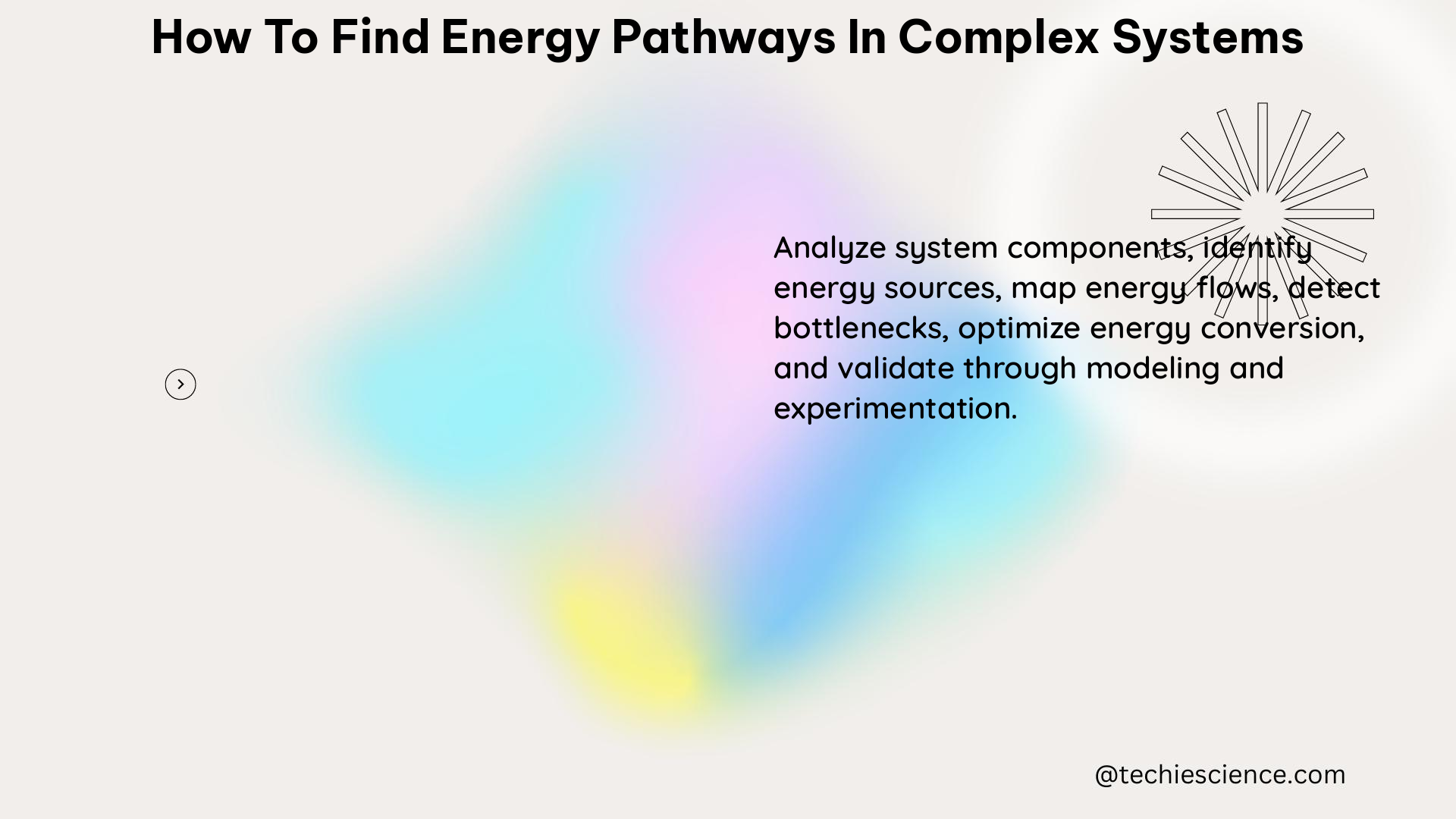Summary
Navigating the intricate web of energy pathways within complex systems can be a daunting task, but with the right tools and methodologies, it is possible to uncover the underlying connectivity and dynamics that govern these systems. This comprehensive guide delves into the various techniques and approaches that can be employed to identify and analyze energy pathways in complex systems, providing a roadmap for researchers, engineers, and energy professionals.
Understanding Connectivity in Complex Systems

Structural Connectivity (SC) and Functional Connectivity (FC)
To quantify the connectivity within a complex system, researchers often rely on two key concepts: Structural Connectivity (SC) and Functional Connectivity (FC).
Structural Connectivity (SC) refers to the physical connections between the components of a system, such as the wiring or pipelines that link various energy-generating and energy-consuming elements. Measuring SC can provide insights into the physical infrastructure and topology of the system.
Functional Connectivity (FC), on the other hand, focuses on the temporal correlations between the activities of different system components. By analyzing FC, researchers can gain a deeper understanding of the actual processes and dynamics that govern the flow of energy within the system.
Limitations of Existing Tools and the Need for New Approaches
While a variety of tools are available for quantifying SC and FC, these tools often have limitations that can constrain our understanding of the system. Indirect measurements, such as those used to infer connectivity, can lead to subjectivity and uncertainty in our understanding of the system’s dynamics and feedbacks.
To address these limitations, it is crucial to develop new tools and approaches that can more accurately capture the complexity of energy pathways within a system. This may involve exploring novel techniques for measuring and analyzing connectivity, as well as integrating different data sources and modeling frameworks.
Exploring SC-FC Relations and Elementary Flux Modes
One promising avenue for research in this field is the exploration of the relationships between Structural Connectivity (SC) and Functional Connectivity (FC). By understanding how the physical connections within a system relate to the observed dynamic processes, researchers can gain valuable insights into the system’s functionality and identify key network components.
The concept of “elementary flux modes” (EFMs), which has been widely used in Systems Biology to decompose complex metabolic networks into simpler units, can be extended to other disciplines, including energy systems. EFMs can help predict and analyze the importance of certain network components, providing a powerful tool for understanding the system’s energy pathways and identifying critical points of intervention.
Applying Connectivity Analysis to Energy Systems
In the context of energy systems, understanding the connectivity between components is crucial for identifying the most relevant properties of dynamical processes and exploring how shifts in network topology can result in novel systems. By quantifying SC and FC, researchers can derive minimal models that capture the relationships between system components, which can then be used to manage and optimize complex energy systems.
Identifying Relevant Properties of Dynamical Processes
By analyzing the connectivity within an energy system, researchers can identify the most relevant properties of the dynamical processes that govern energy flows. This information can be used to develop targeted interventions or design strategies to enhance the system’s efficiency, resilience, and sustainability.
Exploring Shifts in Network Topology
Shifts in the network topology of an energy system, such as the addition or removal of components or the reconfiguration of connections, can have significant impacts on the system’s energy pathways and overall performance. By understanding the connectivity within the system, researchers can explore how these topological changes affect the system’s dynamics and identify opportunities for optimization or adaptation.
Deriving Minimal Models of SC and FC
The insights gained from connectivity analysis can be used to derive minimal models of Structural Connectivity (SC) and Functional Connectivity (FC) within an energy system. These models can capture the essential relationships between system components and provide a framework for managing and optimizing complex energy systems.
Conclusion
Finding energy pathways in complex systems is a multifaceted challenge that requires a comprehensive understanding of connectivity and dynamical processes. By leveraging a variety of tools and approaches, including the analysis of Structural Connectivity (SC) and Functional Connectivity (FC), as well as the exploration of SC-FC relations and the application of elementary flux mode concepts, researchers can uncover the underlying energy pathways and develop strategies for managing and optimizing complex energy systems.
Reference:
- Connectivity and complex systems: learning from a multi-disciplinary perspective. Appl Netw Sci (2018) 3:11. https://doi.org/10.1007/s41109-018-0067-2
- ENERGY SYSTEM DEVELOPMENT AND LOAD MANAGEMENT: A Clinical Commentary. Int J Sports Phys Ther. 2017 May; 12(3): 430–443. https://www.ncbi.nlm.nih.gov/pmc/articles/PMC5534159/
- A framework for exploring futures of complex urban energy systems. Frontiers in Climate (2023) 5:1145277. https://www.frontiersin.org/articles/10.3389/fclim.2023.1145277/full

The lambdageeks.com Core SME Team is a group of experienced subject matter experts from diverse scientific and technical fields including Physics, Chemistry, Technology,Electronics & Electrical Engineering, Automotive, Mechanical Engineering. Our team collaborates to create high-quality, well-researched articles on a wide range of science and technology topics for the lambdageeks.com website.
All Our Senior SME are having more than 7 Years of experience in the respective fields . They are either Working Industry Professionals or assocaited With different Universities. Refer Our Authors Page to get to know About our Core SMEs.